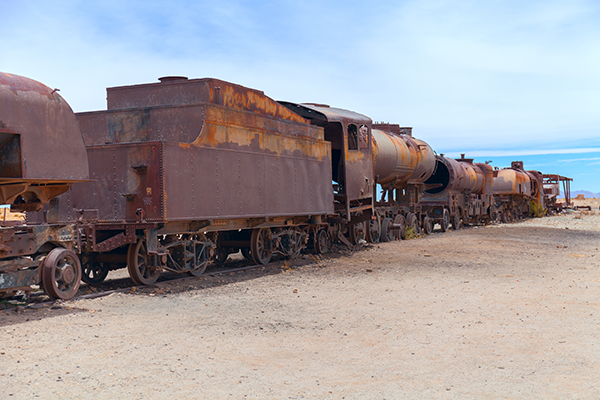Projects can sometimes resemble the irresistible pull of the “Crazy Train”—chaotic, disorderly and ultimately destructive. Construction professionals know that once you’re on board, it’s hard to get off. The glimmer of success seen in the distance is often the light of impending failure, not the completion of a successful project.
Why Do People Board the Crazy Train?
- Overconfidence in the Face of Red Flags:
Projects often begin with optimism, even when clear warning signs appear—missing documentation, inadequate manpower, miscommunication. Yet, some teams push ahead, thinking they can handle the challenges, ignoring the flashing red signals that they’re heading for disaster.
- The Thrill of Chaos:
Some crew members thrive in chaotic environments. They may enjoy firefighting instead of planning, reacting to issues rather than preventing them. These workers are often seen as “heroes” when they solve emergencies, but in reality, they’re often a symptom of deeper systemic problems. These individuals may enjoy the spotlight and recognition during crises but aren’t contributing to sustainable project success.
- Misaligned Management:
Disorganization at the leadership level—where schedules are missed, communication is lacking and workmanship suffers—quickly leads to a loss of control. Managers who can’t keep the train on the tracks find themselves fighting fires they should have prevented, letting critical tasks slip through the cracks.
The Toll of Staying on Board
Once on the Crazy Train, the consequences pile up, dragging a project deeper into chaos. Critical factors like increased expenses for labor and equipment rentals, and the repeating of tasks that should have been done right the first time. These problems aren’t just theoretical, they manifest in measurable financial and operational strain.
The author once visited a manufacturing facility that was responsible for welding pups using submerged arch welding for transitions. When reviewing the weld repair rate of 103% it was evident that every weld had to be redone and 3% had to be redone a third time. There is no project in the entire world that can survive that type of repair rate. Three months later the company filed for bankruptcy.
Not only was the work consistently flawed, but the added burden of redoing it—sometimes more than once—created a spiraling effect. Every project has a breaking point, and for that company, it was bankruptcy. You can’t sustain a project where rework becomes a norm, and this happens when people start to believe the chaotic way is the only way.
The Signs of the Crazy Train in Your Project
Here are some clear indicators that a project is buying tickets for—or already on—the Crazy Train:
- Missed Deadlines with No Clear Cause:
When deadlines are missed regularly, not due to unforeseen circumstances but from preventable issues like miscommunication or lack of planning, no scope, no issued-for-construction drawings, it’s a sign the project is out of control.
- High Turnover and Crew Fatigue:
When workers are frequently leaving the project or expressing burnout, it suggests the environment is toxic and unsustainable. Fatigue leads to more mistakes, which leads to more rework, perpetuating the cycle of chaos.
- Overbudget and Over Schedule:
A clear sign is when a project is consistently over budget and behind schedule without proper mitigation plans in place. The longer this goes on, the harder it is to correct.
- Reactive Decision-Making:
Projects driven by daily or weekly emergencies—rather than proactive planning—are doomed to spiral further out of control.
Jumping Off the Train: Course-Correcting Before It’s Too Late
Getting off the Crazy Train requires recognizing these early warning signs and making swift, decisive interventions:
- Establish Strong Leadership:
A clear hierarchy of responsibility and accountability can restore order. Leadership must be focused on preventing problems rather than solving them after they arise.
- Implement Structured Planning:
Using tools like 3-week look-ahead schedules, regular status meetings and earned value calculations or Jobsight360 to monitor progress ensures that small issues are caught and corrected before they snowball.
- Demand High Standards from the Start:
Fostering a culture where quality is paramount can prevent costly rework. As the weld repair example shows, low standards lead to catastrophic consequences. Regular audits, strict quality control and setting clear expectations upfront are critical.
- Communicate Effectively:
Miscommunication between teams, departments or management levels can quickly lead to chaos. Ensuring that everyone has the right information at the right time can prevent misunderstandings, delays and misaligned priorities.
- Hold Everyone Accountable:
Accountability is key to preventing the Crazy Train from gaining momentum. Whether it’s a crew member skipping steps in workmanship or a manager missing crucial deadlines, people must be held responsible for their roles and performance.

By recognizing the allure of the Crazy Train early on and implementing strategies to avoid or escape it, project teams can ensure they don’t fall into the trap of chaos and disarray. The story of the manufacturing facility serves as a cautionary tale—a reminder that no project can afford to let the chaos take over without paying a steep price.

